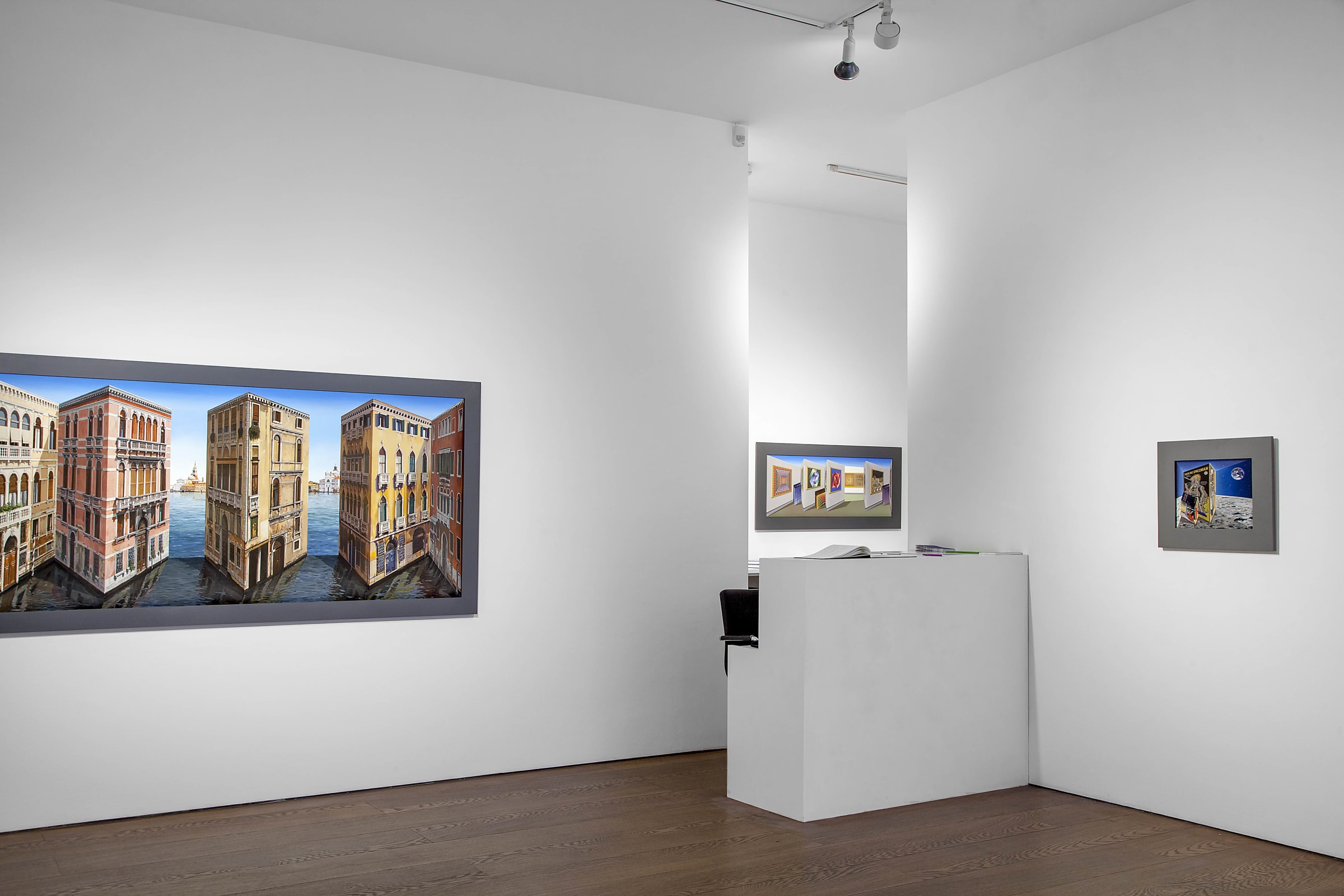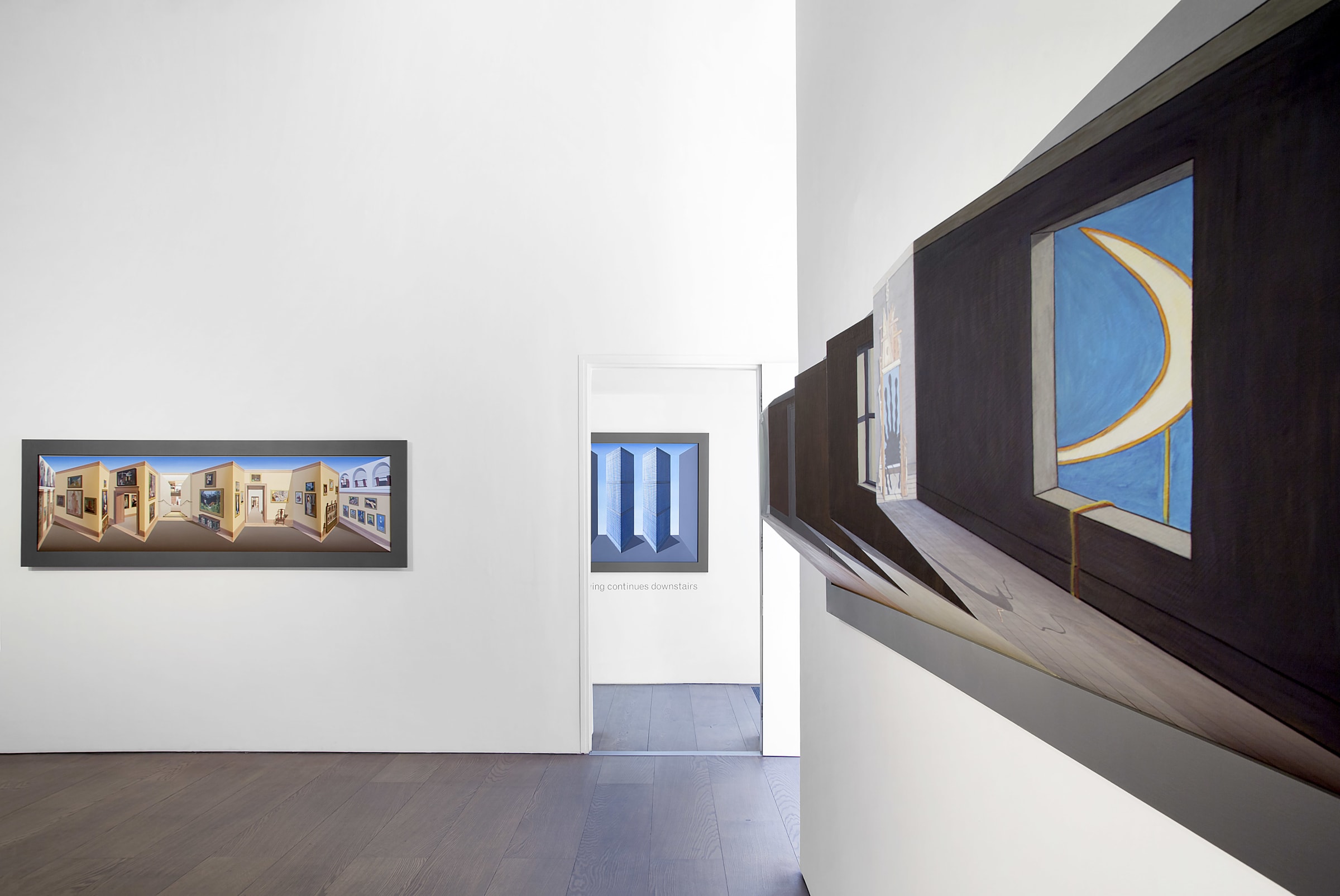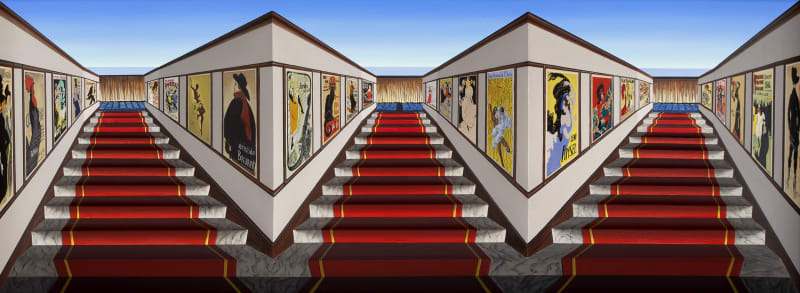Overview
Patrick Hughes has achieved recognition around the world for his lifelong exploration of perspective and visual paradox, through which he has engaged in a historical dialogue with the masters of the Renaissance and Surrealism, and has been aligned with scientific discoveries in the field of three-dimensional visual perception.
“Our eyes are parts of our brains which are parts of our bodies. If you look at my pictures in books or without moving they are simply pictures, not illusions. But when we move in front of these works they move in a dance choreographed by our feet and legs. I could call it not Op Art but Body Art, if that term were not already taken by the tattooists. Perspective, which was new in the fifteenth century, is given another lease of life by reversing it and giving our kinaesthetic sense a chance to star.” - Patrick Hughes
Patrick Hughes has achieved recognition around the world for his lifelong exploration of perspective and visual paradox, through which he has engaged in a historical dialogue with the masters of the Renaissance and Surrealism, and has been aligned with scientific discoveries in the field of three-dimensional visual perception.
Ever since he first identified the occurrence of ‘reverse perspective’ in his painting Sticking Out Room more than fifty years ago, Hughes has continued to confound viewers with his three-dimensional paintings. As Professor Dawn Ades describes “These really have to be experienced physically, in the flesh, for they are only activated fully by the spectator’s movement. They thus take their place, with Duchamp’s Large Glass and Etant donnés, Dalí’s paranoiac-critical room (Mae West’s Face Which May Be Used as a Surrealist Apartment), or the now-vanished surrealist installations, as creations that need the physical presence of a spectator to be complete, engaging the body as well as the eye and the mind.” 1
Stairs to the Stars is constructed from a succession of horizontal trapezoids portraying a perspectival view of a staircase, inviting the viewer to enter the scene while also making reference to the visual conundrums of Escher’s ‘impossible’ constructions. Alluding to what could be at stake in our visual unpacking of reality, the title of a new multifaceted painting Light is the Shadow of God derives from a quote by Sir Thomas Browne in his essay The Garden of Cyrus (1658) “The sun itself is but the dark simulacrum and light but the shadow of God.” In this painting, Hughes acknowledges the importance of light in the works of Giorgio de Chirico, Edward Hopper and René Magritte. A more playful approach to Hughes’ perceptual enquiry can be located within the painting Smoking Spaceman, in which the viewer is presented with an image of a popular child’s toy alongside its own painted likeness on the box. Alongside the new subject matter, Hughes returns to several longrunning themes, including the cityscape of Venice, with its enduring ‘pop’ appeal - being, as he has determined, both endlessly reproduced and reproducible.
Professor Colin Blakemore, Director of the Institute of Philosophy’s Centre for the Study of the Senses at the University of London’s School of Advanced Study has said: “I shall never forget the first time I saw one of Patrick Hughes’ large Reverspective paintings… It almost literally knocked me over. I’ve spent much of my working life thinking about the way in which the brain puts together different sources of evidence about the 3-D world. But while I think, Patrick explores. He has unashamedly trekked through the no-man’s-land between Art and Science, demonstrating the brain’s remarkable powers not with brain scanners and fancy equipment, but with stunning images that are personal in a very special way – responding to the command of every viewer. His work can be judged, and enjoyed, at so many levels. It raises questions just as profound about the mechanisms in our brains as it does about the nature of an artistic representation.”
1. ‘The Logic of the Paradox: The Early Work of Patrick Hughes’, A New Perspective, Flowers Gallery, London, 2014. Page 26.
2. Excerpt published in Paradoxymoron by Patrick Hughes, Reverspective Ltd., London, 2011. Chapter 1, Page 18.
Patrick Hughes has achieved recognition around the world for his lifelong exploration of perspective and visual paradox, through which he has engaged in a historical dialogue with the masters of the Renaissance and Surrealism, and has been aligned with scientific discoveries in the field of three-dimensional visual perception.








